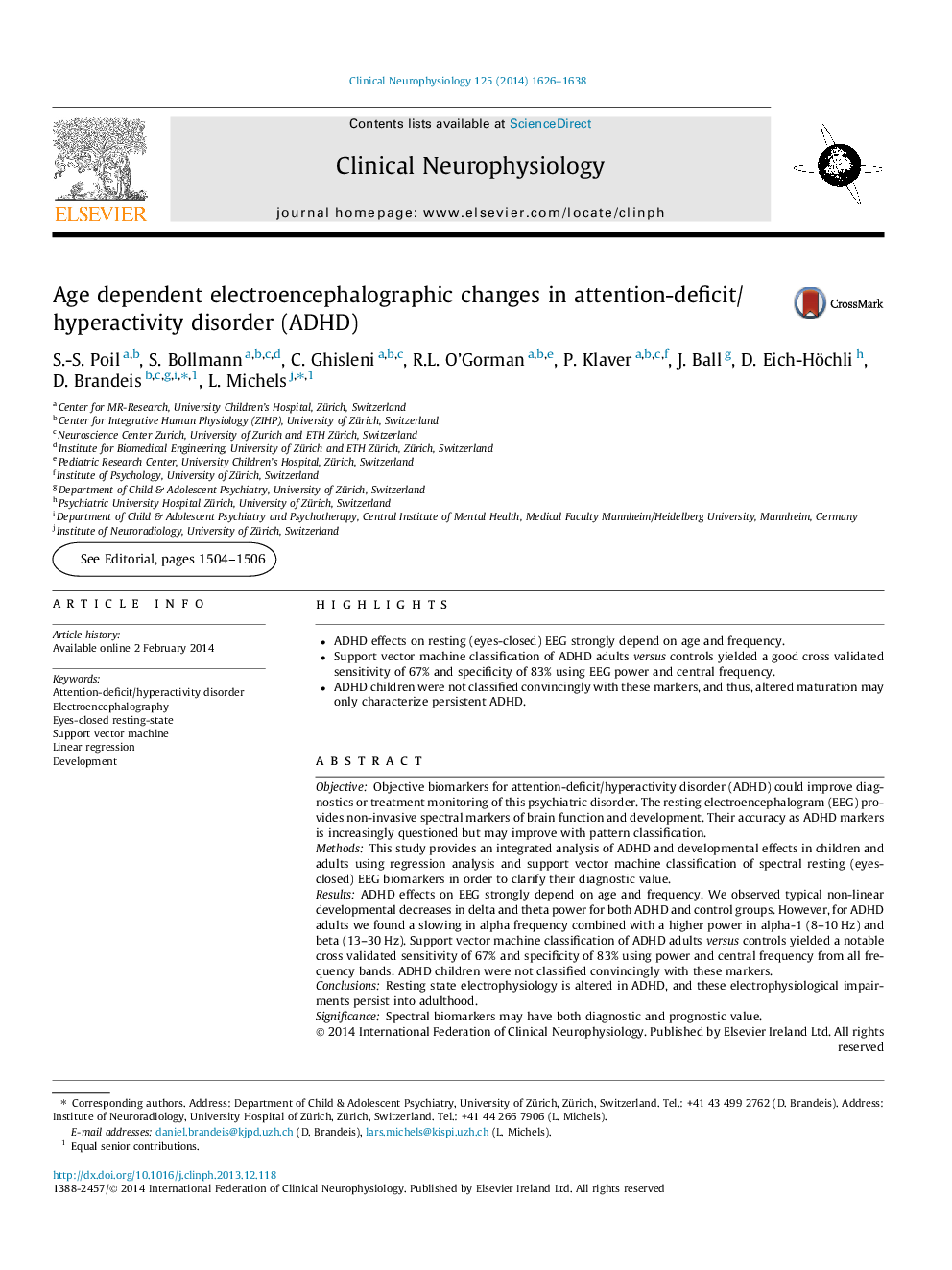| Article ID | Journal | Published Year | Pages | File Type |
|---|---|---|---|---|
| 3043490 | Clinical Neurophysiology | 2014 | 13 Pages |
•ADHD effects on resting (eyes-closed) EEG strongly depend on age and frequency.•Support vector machine classification of ADHD adults versus controls yielded a good cross validated sensitivity of 67% and specificity of 83% using EEG power and central frequency.•ADHD children were not classified convincingly with these markers, and thus, altered maturation may only characterize persistent ADHD.
ObjectiveObjective biomarkers for attention-deficit/hyperactivity disorder (ADHD) could improve diagnostics or treatment monitoring of this psychiatric disorder. The resting electroencephalogram (EEG) provides non-invasive spectral markers of brain function and development. Their accuracy as ADHD markers is increasingly questioned but may improve with pattern classification.MethodsThis study provides an integrated analysis of ADHD and developmental effects in children and adults using regression analysis and support vector machine classification of spectral resting (eyes-closed) EEG biomarkers in order to clarify their diagnostic value.ResultsADHD effects on EEG strongly depend on age and frequency. We observed typical non-linear developmental decreases in delta and theta power for both ADHD and control groups. However, for ADHD adults we found a slowing in alpha frequency combined with a higher power in alpha-1 (8–10 Hz) and beta (13–30 Hz). Support vector machine classification of ADHD adults versus controls yielded a notable cross validated sensitivity of 67% and specificity of 83% using power and central frequency from all frequency bands. ADHD children were not classified convincingly with these markers.ConclusionsResting state electrophysiology is altered in ADHD, and these electrophysiological impairments persist into adulthood.SignificanceSpectral biomarkers may have both diagnostic and prognostic value.
